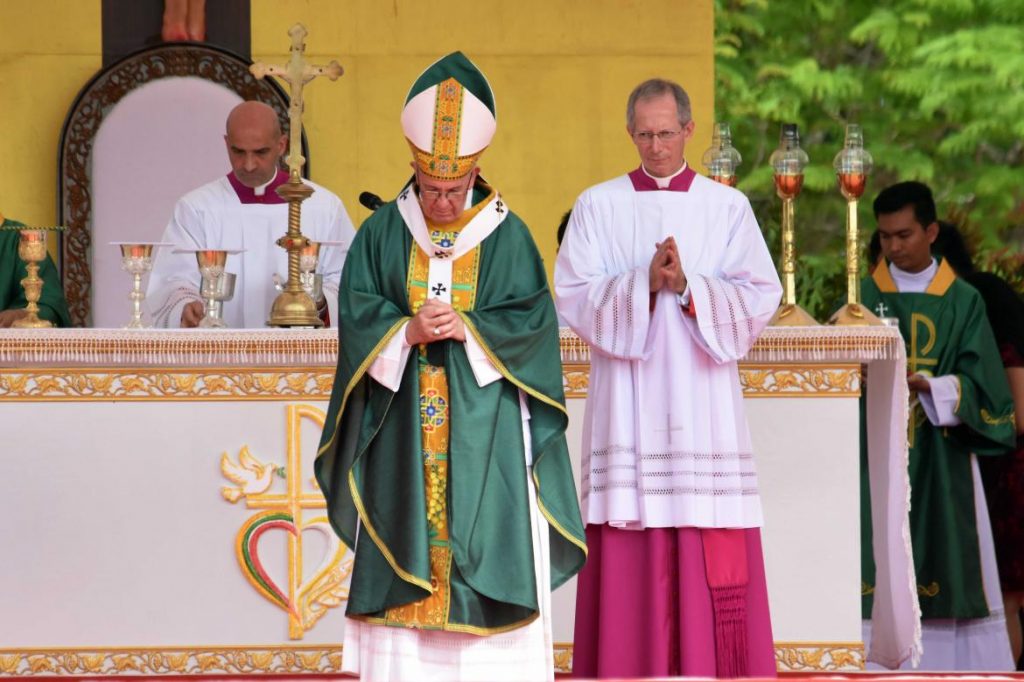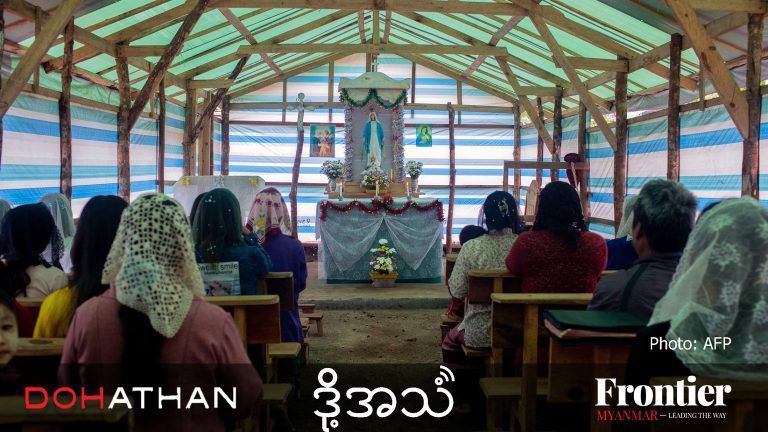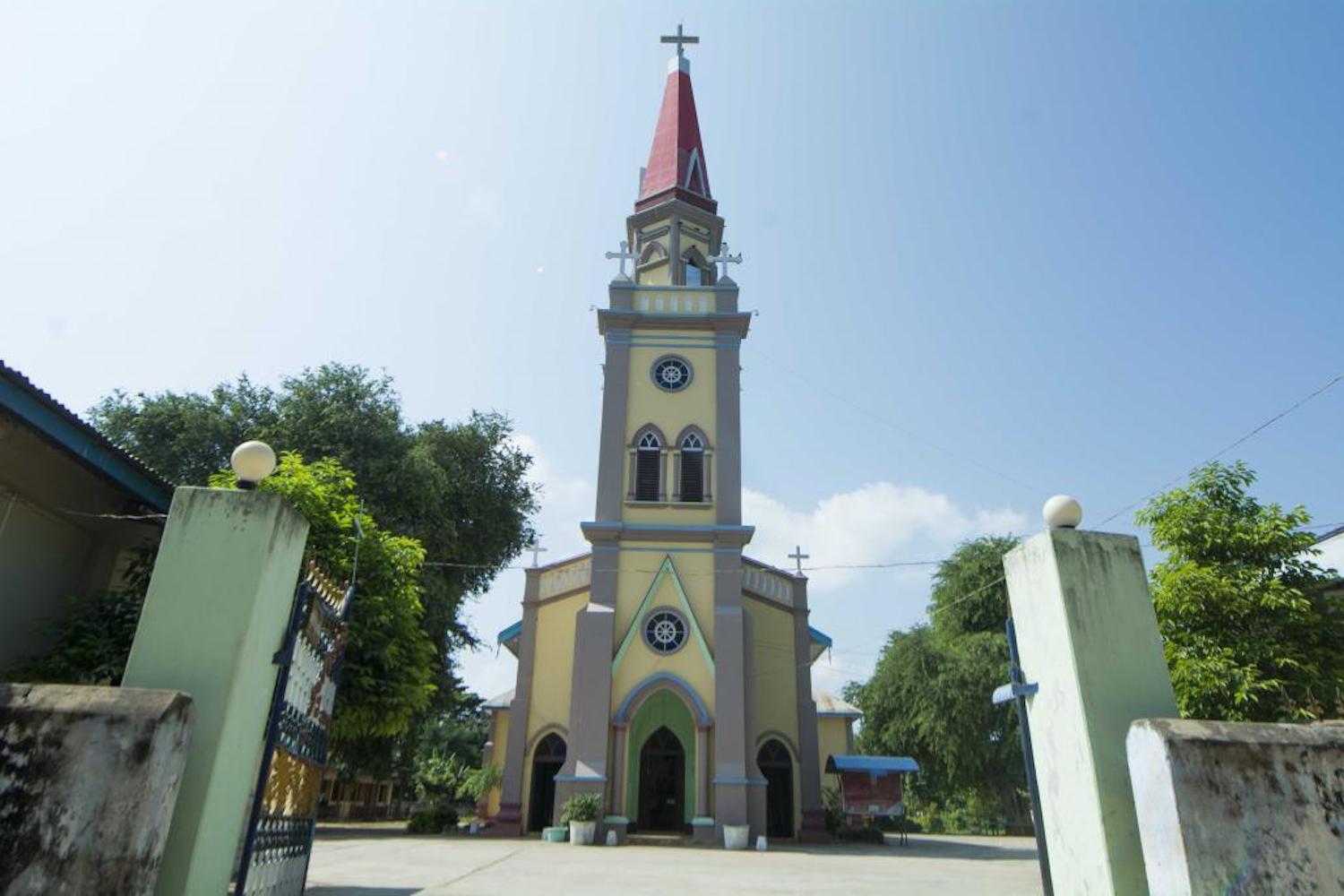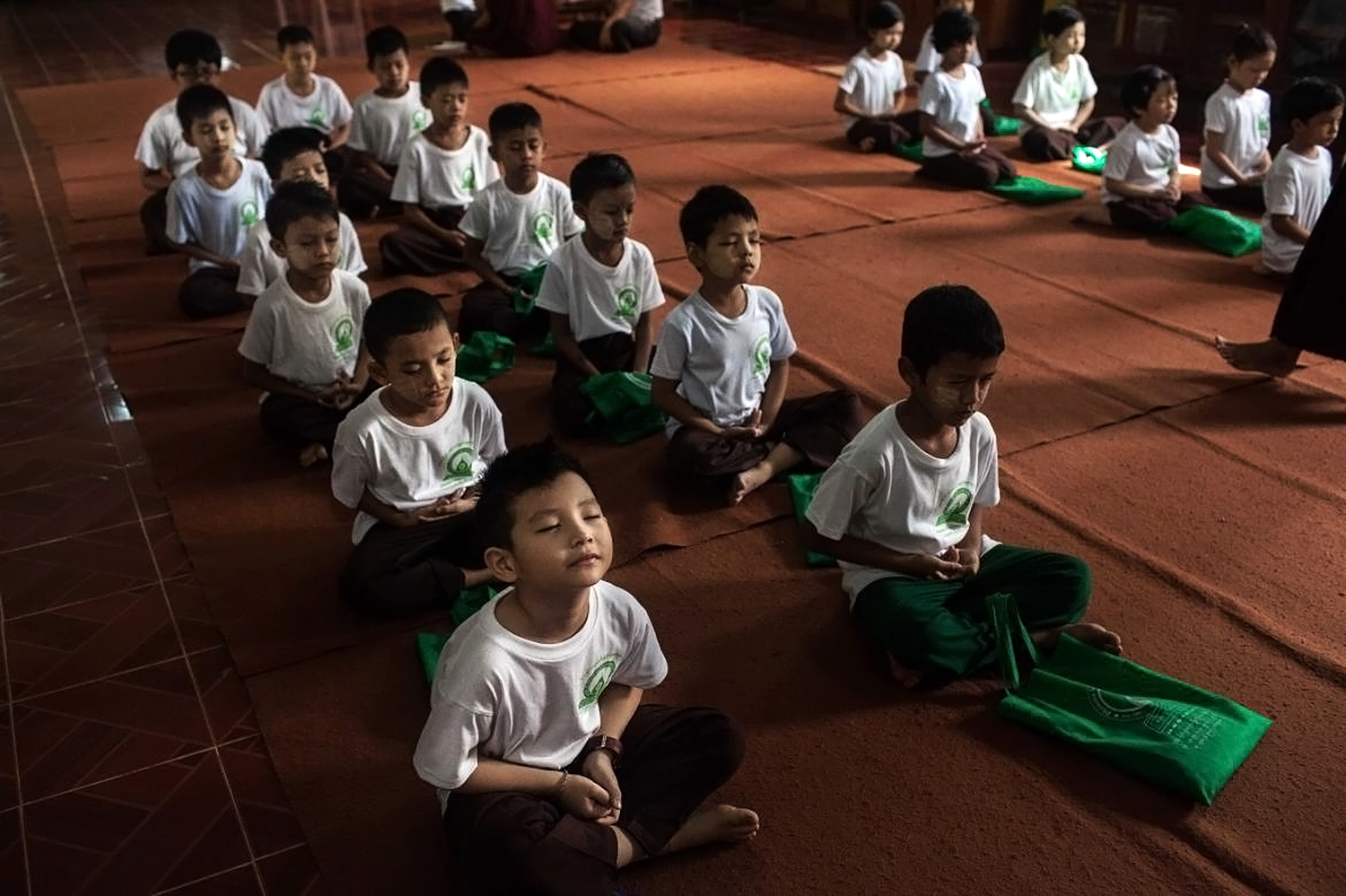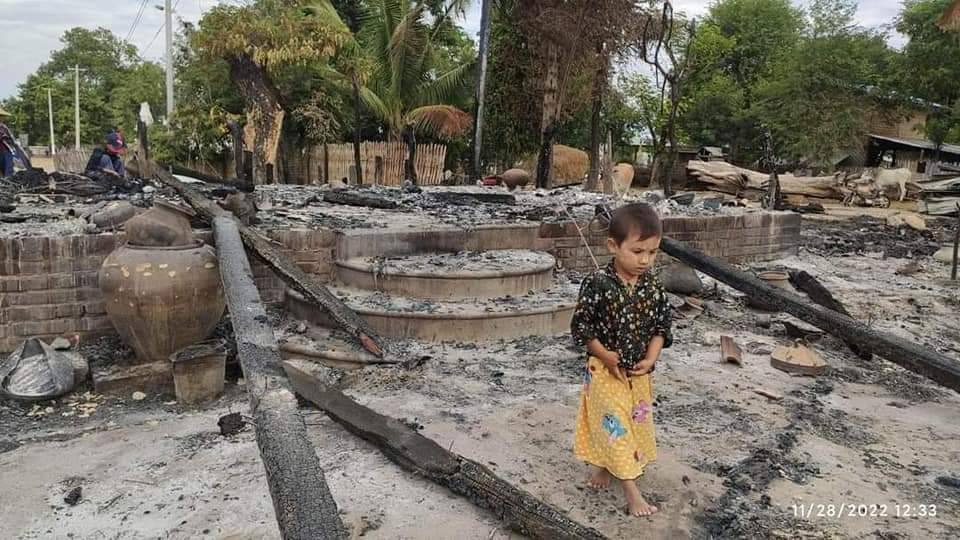‘Love and peace’ was the theme of the historic visit to Myanmar by Pope Francis, who told how Jesus responded to hatred and rejection with forgiveness and compassion.
By JARED DOWNING | FRONTIER
WHEN POPE Francis said Mass in Yangon on November 30, it was the biggest show in town. Nearly a quarter of Myanmar’s Roman Catholics packed into the Kyaikkasan Grounds for the November 29 event, about 100,000 people as still and silent as a photograph.
Many had spent days winding down mountain trails and sleeping on rickety trains just to catch a glimpse of the first pope to visit Myanmar, and they were not going to miss a single one of his words.
“We think that healing can come from anger and revenge,” Francis preached, citing a passage from the book of Daniel. “Yet the way of revenge is not the way of Jesus.”
tzh_holymass38.jpg
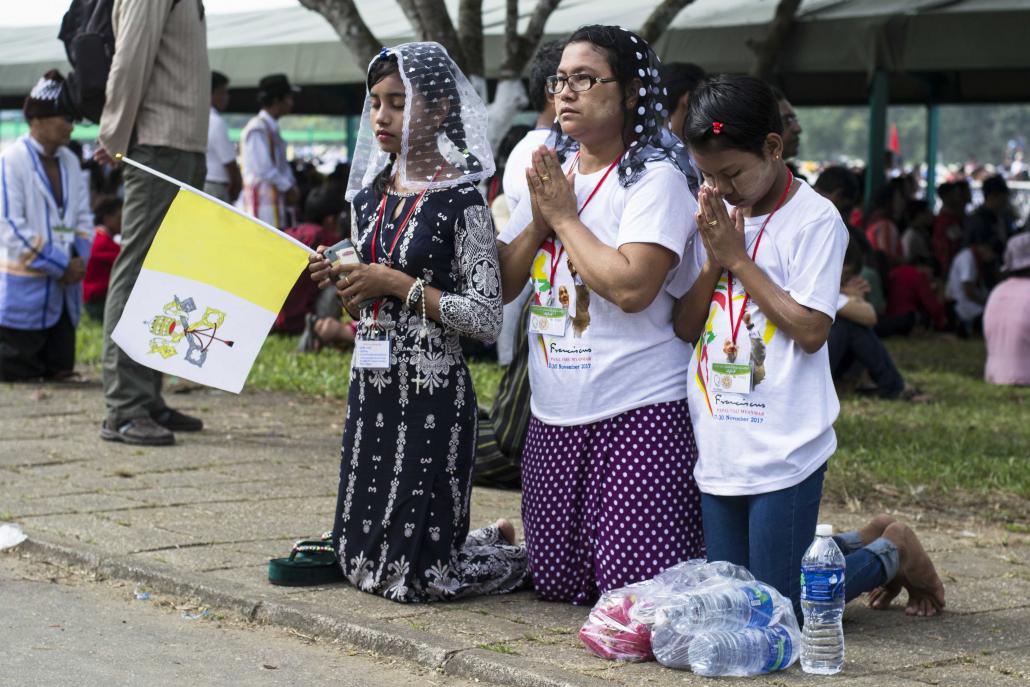
Teza Hlaing | Frontier
Support more independent journalism like this. Sign up to be a Frontier member.
The pope’s visit came during one of the worst human rights and humanitarian crises in Myanmar’s democratic transition. Some journalists, advocates and human rights groups were disappointed that he did not use the word “Rohingya”, at least in public.
Others argued that any public mention of the Rohingya might have made the situation worse, or at least imperiled the country’s small Catholic minority, which comprises about one percent of the population.
Instead of inciting Christians to crush evil, the pope called on the Myanmar people, of all faiths, to embrace love.
“When hatred and rejection led [Jesus] to his passion and death, he responded with forgiveness and compassion,” he said.
dsc_9726.jpg
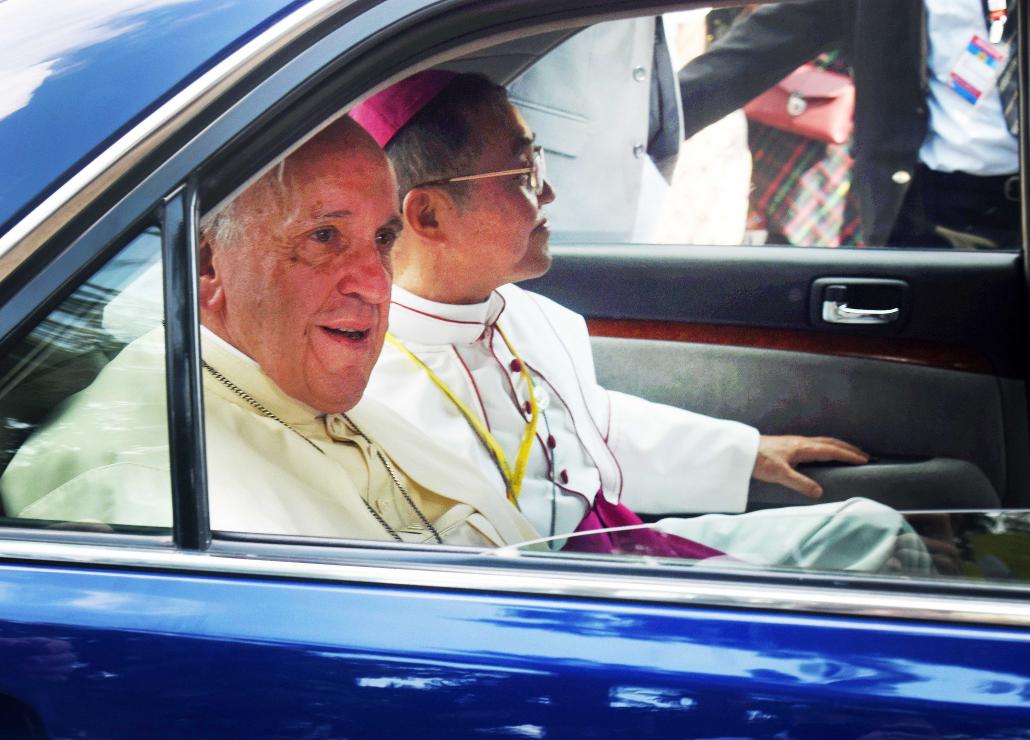
Steve Tickner | Frontier
Father Mariano Soe Nang of the Myanmar Bishop’s Conference believes the country’s Catholics will heed the call.
“[Pope Francis] left a lot of challenges for how we can take part in society here, contributing to charitable works and giving to the needy,” he said. “If we work on this, this can be a turning point of our existence, for our Catholic Church to be more involved in the development of our country.”
For Mariano Soe Nang and his fellow ministers, the visit was like a dream. He was overjoyed when the trip was announced, but he wasn’t convinced it would really happen until he saw the pope with his own eyes.
Surely there would be some delay, or Francis would fall ill, or the political situation would escalate beyond the Vatican’s comfort level, or any number of things could happen that would prevent the first papal visit to Myanmar from going head.
“The anxiety was there,” Mariano Soe Nang said. “I was at the airport to assist the journalists, and only when the plane landed did I know it was real.”
Rather than being guarded and aloof, the pope impressed during his visit with his remarkable warmth.
dsc_9564.jpg
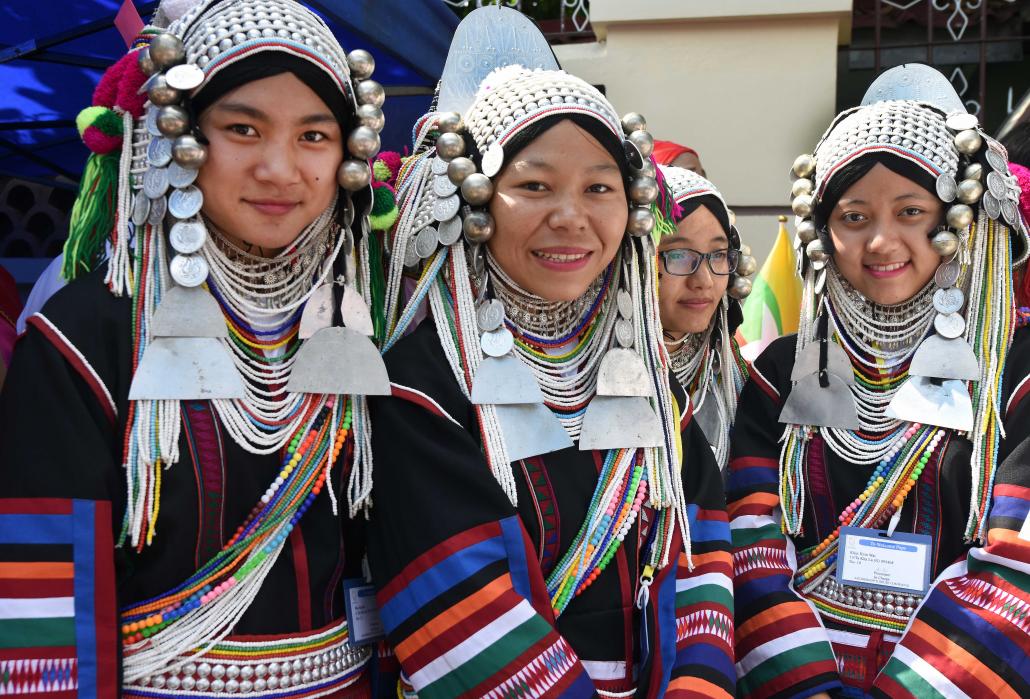
Steve Tickner | Frontier
It was evident at his meetings with President U Htin Kyaw, State Counsellor Daw Aung San Suu Kyi, Senior General Min Aung Hlaing and senior Buddhist monks. But it was especially clear when he was with the people, such as when he eschewed the concerns of his bodyguards to mix with the crowd and greet young Catholics at his final Mass at St Mary’s Cathedral on the morning of November 30.
“His presence is already quite an emotional moment for many people, especially the young people,” Mariano Soe Nang said. “The young people saw that they are not anonymous in the Church, but they are people who are being cared for and loved.”
Later on November 30, Francis left for Bangladesh on the second leg of his visit to two of the smallest Catholic communities in Asia. In Dhaka, far from the ornate brickwork of St Mary’s Cathedral, the pope met Rohingya refugees from Rakhine State.
“Let’s not close out hearts, let’s not look to the other side. The presence of God today is also called ‘Rohingya,’” he said.
That the pontiff waited until after he had left Myanmar to use a term contested by the government, the Tatmadaw and most citizens underscored the diplomatic tightrope he had walked during his visit.
Amid the violence and destruction that has forced more than 620,000 Muslims to flee Myanmar, how could one of the world’s most influential voices for peace and social justice sidestep the issue?
Or would using a term that many in Myanmar regard as a provocation been counterproductive, bringing complications to the lives of Catholics and eroding the church’s already limited influence in a predominantly Buddhist nation?
The Catholic magazine Crux addressed the controversy in a commentary.
tzh_holymass58.jpg
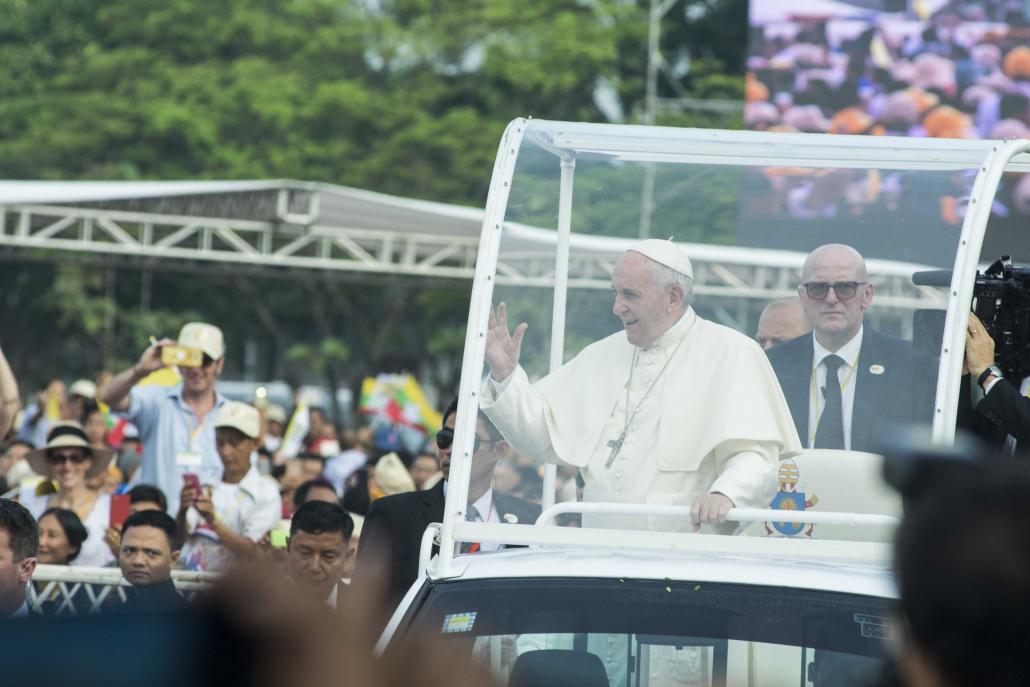
Teza Hlaing | Frontier
“There’s no magic formula,” it said, “though popes try to take their cues to a great extent from the local church, which has to live with the consequences of whatever he says or does long after he’s back in Rome.”
The consequence of the pope’s visit for one Catholic, who introduced himself as Maurice and had travelled five hours with his family from Pathein in Ayeyarwady Region to attend the Mass, was a strengthening of conviction.
“I am so happy to see him,” he said. “I believe in him, and I believe in the Faith.”
TOP PHOTO: Steve Tickner | Frontier


